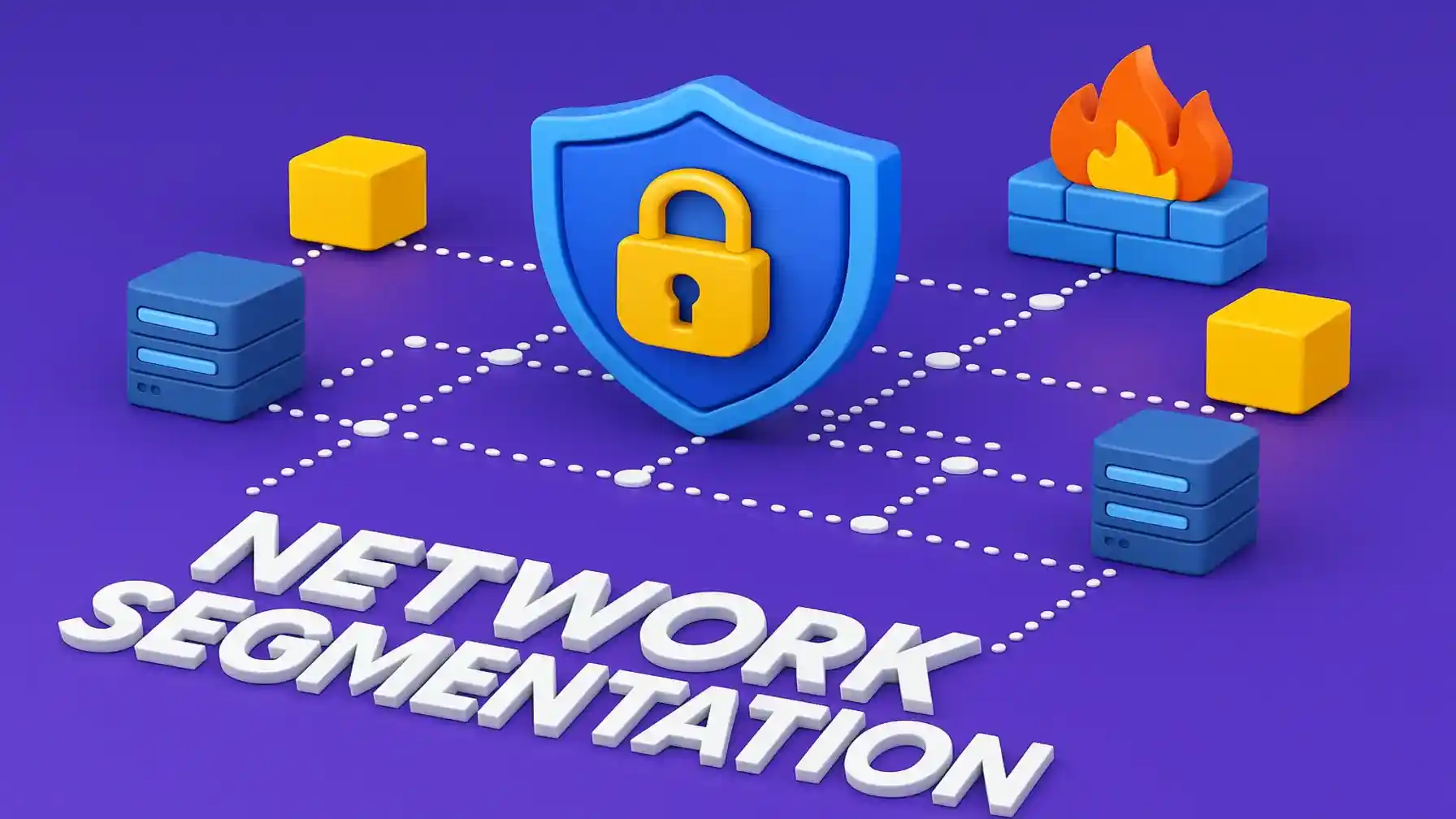In today’s hyper-connected world, where nearly every business operation relies on digital infrastructure, cybersecurity governance is no longer optional—it’s essential. Whether you’re running a multinational enterprise or a growing startup, data breaches, ransomware, and phishing attacks pose serious threats that can disrupt operations, damage reputation, and drain financial resources.
Cybersecurity governance refers to the system by which an organization directs and controls its cybersecurity efforts. It involves decision-making structures, accountability mechanisms, and continuous risk management strategies that align with business goals. Simply put, it’s the rulebook and playbook that ensures your digital security game stays strong.
Unlike traditional IT security, governance adds a strategic layer. It doesn’t just ask, “How do we secure our systems?” It asks, “Are our security efforts aligned with what we’re trying to achieve as a business?” That’s why strong cybersecurity governance has become a competitive advantage in today’s digital economy.
What is Cybersecurity Governance? A Deeper Look
At its core, cybersecurity governance is about leadership, responsibility, and accountability. It’s the framework that ensures cybersecurity decisions support and enhance the organization’s overall mission and goals.
Think of it as building the guardrails for how cybersecurity policies are created, executed, monitored, and improved over time. It ensures that the right people are making the right decisions with the right information. It also enables business leaders to balance risk, compliance, and investment decisions with long-term strategic planning.
Also Read: Conducting cybersecurity risk assessment for business protection
Key elements of cybersecurity governance include:
-
Clear assignment of roles and responsibilities
-
Integration of cybersecurity with enterprise risk management
-
Alignment with regulatory and industry compliance standards
-
Board-level oversight and executive sponsorship
-
Regular review and continuous improvement of security policies
Without a structured approach, organizations risk becoming reactive, responding to threats after damage has been done. Governance makes security proactive, enabling resilience in the face of uncertainty.
The Relationship Between Cybersecurity Governance and Business Success:
Cybersecurity governance is not just an IT concern—it’s a business enabler. Companies that treat it as a strategic asset are better positioned to build trust, protect brand value, and ensure operational continuity.
Here’s how strong governance directly impacts business success:
1. Improved Risk Management
With a governance framework in place, organizations can identify and manage cyber risks more effectively. Governance ensures that risk assessments are consistent, repeatable, and tied to real business impacts.
2. Better Decision-Making
When governance structures are clearly defined, decision-making becomes faster and more informed. Leadership knows what actions to take when security issues arise, and policies guide consistent responses.
3. Regulatory Compliance
Many industries are governed by strict cybersecurity laws—GDPR, HIPAA, PCI DSS, and more. Governance ensures that compliance isn’t a one-time activity but an ongoing commitment that is monitored and maintained.
4. Stakeholder Confidence
Customers, investors, and partners want assurance that their data is protected. A well-governed cybersecurity program builds credibility and fosters trust with internal and external stakeholders.
Key Pillars of Effective Cybersecurity Governance:
To be truly effective, a cybersecurity governance framework must rest on solid foundational pillars. These include:
1. Leadership and Accountability
Governance starts at the top. The board of directors and senior executives must understand the importance of cybersecurity and champion its integration into the organization’s core strategy. Appointing a Chief Information Security Officer (CISO) or equivalent leader ensures that there’s someone accountable for driving governance initiatives.
Key leadership actions include:
-
Setting a vision for security
-
Allocating resources for cybersecurity programs
-
Reviewing metrics and reports to assess risk posture
-
Fostering a culture of accountability and security awareness
2. Strategic Alignment
Cybersecurity goals should not operate in a vacuum. They must align with the broader business objectives. For instance, if a company is expanding into cloud-based services, its governance should address cloud security risks, compliance issues, and vendor management.
Aligning security and business strategy means:
-
Security investments are justified and prioritized
-
Policies are relevant to actual business operations
-
Risk tolerance is defined based on business context
3. Policies and Standards
Policies are the backbone of cybersecurity governance. They define what is acceptable, what is not, and what must be done in specific situations. Good policies are clear, enforceable, and updated regularly.
Effective governance includes:
-
Acceptable Use Policy (AUP)
-
Data Protection Policy
-
Incident Response Policy
-
Access Control Policy
Each of these must be reviewed and approved by leadership and communicated to employees effectively.
Cybersecurity Governance Frameworks: Which one should you choose?
There’s no one-size-fits-all solution to governance. However, organizations often adopt established frameworks to streamline their efforts. These frameworks offer a structured methodology to guide implementation and evaluation.
1. NIST Cybersecurity Framework (CSF)
Developed by the U.S. National Institute of Standards and Technology, this framework helps organizations identify, protect, detect, respond to, and recover from cyber threats. It’s highly adaptable and widely used across both public and private sectors.
2. ISO/IEC 27001
This international standard focuses on Information Security Management Systems (ISMS). It provides a risk-based approach to managing information security and is particularly useful for companies looking to build credibility in global markets.
3. COBIT (Control Objectives for Information and Related Technologies)
COBIT is an IT governance framework that connects IT initiatives with business goals. It emphasizes value delivery and resource optimization, making it ideal for organizations seeking better alignment between IT and business strategy.
4. CIS Controls
The Center for Internet Security provides a list of prioritized actions (CIS Controls) that offer specific and actionable ways to prevent the most common cyber threats. These are particularly effective for small and medium-sized businesses.
Each of these frameworks has strengths. The right choice depends on your industry, regulatory environment, risk tolerance, and maturity level.
Common Challenges in Implementation:
Despite its benefits, many organizations struggle to implement cybersecurity governance effectively. Let’s explore the key obstacles:
1. Lack of Executive Buy-in
If leadership sees cybersecurity as merely a technical function, governance will lack the visibility and support it needs to thrive. Without executive sponsorship, initiatives often stall or remain underfunded.
2. Siloed Operations
Cybersecurity governance requires cross-functional collaboration. But in many organizations, departments work in isolation. This disconnect can lead to inconsistent policies, duplicated efforts, or missed vulnerabilities.
3. Resource Limitations
Building a comprehensive cybersecurity governance program demands skilled personnel, technology investments, and time. Smaller organizations often lack these resources, making implementation difficult.
4. Constantly Evolving Threat Landscape
New attack vectors appear daily. Governance policies and practices must be agile enough to adapt quickly to emerging threats—yet many organizations lag behind.
Overcoming these challenges involves fostering a culture of collaboration, prioritizing cybersecurity at the executive level, and investing in scalable, flexible governance solutions.
Cybersecurity Governance in the Era of Remote Work:
The shift to remote and hybrid work models has reshaped how organizations approach cybersecurity governance. With employees connecting from home networks and using personal devices, new vulnerabilities have emerged.
Key governance adaptations for remote work include:
-
Implementing secure remote access policies (VPN, MFA, etc.)
-
Ensuring data encryption across endpoints
-
Conducting regular cybersecurity awareness training
-
Reviewing third-party applications and cloud services for vulnerabilities
Moreover, governance should now include metrics for remote security performance and incident response readiness, ensuring that location does not compromise organizational resilience.
Cybersecurity Governance and Regulatory Compliance
Organizations today are increasingly held accountable by regulatory bodies, customers, and partners to safeguard data and privacy. Cybersecurity governance plays a crucial role in helping businesses navigate the growing web of legal and industry requirements.

Key Regulatory Frameworks Tied to Cybersecurity Governance:
-
General Data Protection Regulation (GDPR): This European Union law mandates strict data protection and privacy guidelines. Governance helps by ensuring transparency, lawful data handling, and breach notification readiness.
-
Health Insurance Portability and Accountability Act (HIPAA): For healthcare organizations in the U.S., cybersecurity governance ensures the confidentiality and integrity of protected health information.
-
Payment Card Industry Data Security Standard (PCI DSS): Retailers and service providers use governance frameworks to ensure secure handling of credit card transactions.
-
Sarbanes-Oxley Act (SOX): Publicly traded companies must have governance structures that include security measures to protect financial data.
Cybersecurity governance not only ensures compliance but also reduces the risk of hefty fines and reputational damage. Organizations that embed governance into their operational DNA can respond more confidently to audits, investigations, and assessments.
Role of Board and Executive Leadership in Cybersecurity Governance:
Leadership support is not just important—it’s non-negotiable. Cybersecurity governance thrives when it is viewed as a boardroom-level responsibility, not just an IT task.
What Role Should Executives Play?
-
Set the Tone at the Top: Executives must actively promote a security-first mindset across all levels of the organization.
-
Establish Cybersecurity as a Strategic Priority: Governance should be embedded into business strategies, risk assessments, and budgeting decisions.
-
Oversight and Accountability: The board must regularly review cybersecurity performance, question assumptions, and challenge existing protocols.
-
Engage with the CISO: Regular briefings from the Chief Information Security Officer help executives make informed decisions and allocate resources efficiently.
This top-down involvement signals to employees, partners, and regulators that the organization takes cybersecurity governance seriously.
Integrating Cybersecurity Governance with Enterprise Risk Management (ERM):
Cybersecurity risks are no longer isolated—they’re part of the broader enterprise risk landscape. Successful organizations embed cybersecurity governance into their ERM frameworks to ensure a unified, enterprise-wide view of risk.
Benefits of Integration:
-
Holistic Risk Visibility: By aligning cybersecurity with ERM, leaders gain a clearer understanding of how cyber threats impact strategic objectives.
-
Prioritization of Risks: Governance enables objective risk evaluation, helping organizations decide where to focus investments for maximum impact.
-
Consistent Risk Language: It ensures that cybersecurity risks are communicated in business terms, not just technical jargon, making it easier for executives to take action.
By treating cyber risk as a core business risk, organizations are better equipped to anticipate disruptions and ensure continuity.
Measuring the Effectiveness of Cybersecurity Governance:
You can’t manage what you don’t measure. Strong cybersecurity governance includes clear metrics and KPIs (Key Performance Indicators) to evaluate effectiveness and drive continuous improvement.
Important Metrics to Monitor:
-
Incident Response Time: How quickly can your team detect and respond to threats?
-
Security Policy Compliance: Are employees and departments following established cybersecurity policies?
-
Vulnerability Management: How frequently are systems scanned and patched?
-
Training Participation Rates: Are employees attending cybersecurity awareness sessions?
-
Third-Party Risk Assessments: How secure are your vendors and partners?
Collecting, analyzing, and reporting these metrics helps organizations identify gaps and improve governance over time.
The Human Factor:
While tools and technology matter, people remain the weakest link—and strongest defense—in cybersecurity governance.
Why Human Behavior Matters?
-
Phishing Attacks: Most data breaches begin with a simple, deceptive email. Training employees to recognize phishing attempts is a critical governance measure.
-
Password Hygiene: Weak, reused passwords are still common. Governance ensures mandatory password policies and encourages the use of password managers.
-
Shadow IT: Employees may use unapproved tools or software. Governance requires mechanisms for visibility and control over these rogue applications.
How to Strengthen the Human Layer?
-
Launch mandatory cybersecurity awareness programs
-
Include security in onboarding processes
-
Create simulated phishing campaigns to test awareness
-
Reward secure behavior and reportable incidents
By empowering people with the right knowledge, governance becomes a cultural asset rather than just a compliance requirement.
Cybersecurity Governance in Cloud and Multi-Cloud Environments:
As organizations increasingly migrate to the cloud, governance must adapt to address new complexities and risks. Cloud environments introduce shared responsibilities between the organization and the cloud provider.
Key Considerations for Cloud Governance:
-
Data Ownership and Control: Ensure policies clearly define who owns and controls the data in cloud systems.
-
Access Management: Use identity and access management (IAM) tools to control who can access what.
-
Configuration Monitoring: Misconfigurations are among the top causes of cloud breaches. Governance should require regular audits.
-
Compliance in the Cloud: Frameworks like ISO 27017 (Cloud Security) help align governance to cloud-specific standards.
In multi-cloud setups, governance becomes even more vital, ensuring consistent policies, controls, and compliance across diverse environments.
Third-Party Risk and Supply Chain Governance:
In today’s interconnected world, your organization is only as secure as your weakest vendor. Cybersecurity governance must include third-party risk management to prevent threats from creeping in through the back door.
Key Governance Strategies for Managing Vendor Risks:
-
Due Diligence: Assess the security posture of all third-party vendors before onboarding.
-
Contractual Controls: Include security requirements and breach notification clauses in vendor contracts.
-
Continuous Monitoring: Use automated tools to monitor vendors’ cybersecurity health over time.
-
Incident Preparedness: Ensure vendors participate in your incident response plan.
With proper governance, supply chain risks become manageable rather than unmanageable liabilities.
Trends Shaping the Future of Cybersecurity Governance:
Cybersecurity governance is constantly evolving, shaped by technology, threats, and policy changes. Here are key trends to watch:
1. AI and Automation
AI tools are now used for threat detection, response automation, and predictive analytics. Governance must define ethical and effective use of AI, especially when automating critical decisions.
2. Zero Trust Architecture
The principle of “never trust, always verify” is gaining momentum. Governance frameworks must support identity-centric controls, segmentation, and continuous verification.
3. ESG and Cybersecurity
Cybersecurity is becoming part of Environmental, Social, and Governance (ESG) initiatives. Investors and consumers want to know how well organizations protect digital and human rights.
4. Increasing Regulation
Governments are enacting stricter cybersecurity laws. Organizations will need governance frameworks that can quickly adapt to new requirements and demonstrate compliance transparently.
Adapting governance to these trends ensures organizations remain resilient, compliant, and forward-looking.
Conclusion: Building a Governance-First Cybersecurity Culture
Cybersecurity governance isn’t just about rules—it’s about responsibility. It’s the thread that weaves cybersecurity into every layer of the organization, from the data center to the boardroom.
With threats growing more sophisticated and regulations tightening, the stakes have never been higher. But with a strong governance framework, organizations can confidently face the future—protected, prepared, and empowered.
To succeed, governance must be continuous, evolving with the threat landscape and organizational goals. It must engage everyone—from IT teams to end-users—and align with strategic priorities. In short, governance turns cybersecurity from a technical hurdle into a business advantage.
FAQs:
1) How often should cybersecurity governance policies be updated?
At a minimum, policies should be reviewed annually. However, any major organizational, regulatory, or technological change should trigger an immediate policy review.
2) Who is responsible for cybersecurity governance in an organization?
While the CISO typically oversees governance, it’s a shared responsibility. The board, executives, IT leaders, HR, legal, and all employees play key roles.
3) What’s the difference between cybersecurity governance and IT security management?
IT security management focuses on technical controls. Cybersecurity governance ensures those controls align with business goals, legal obligations, and organizational culture.
Also Read: Data Encryption Solutions for Privacy and Safety
4) Can small businesses implement cybersecurity governance?
Absolutely. Governance can be scaled. Even small businesses can define roles, write basic policies, and align security with business needs.
5) How does cybersecurity governance help during a cyber incident?
Governance ensures a predefined response plan exists, roles are clear, communication is swift, and recovery is structured. It reduces chaos and shortens recovery time.








